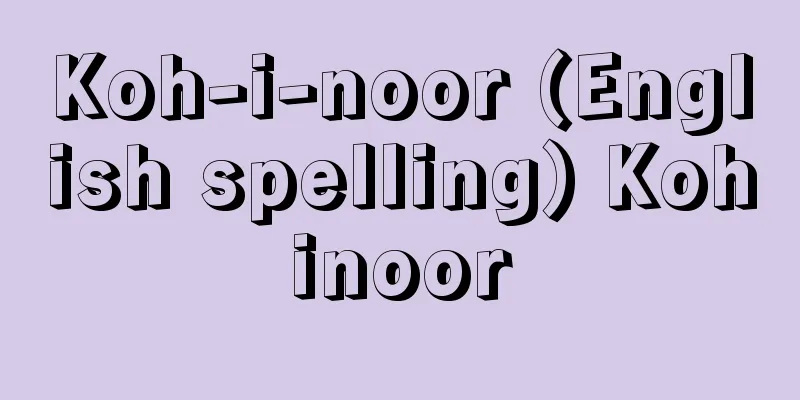Norinaga Motoori

|
Year of death: September 29, 1801 (November 5, 1801) Year of birth: May 7, 15th year of the Kyoho era (June 21, 1730) A scholar of Japanese classics from the Edo period. Born in Matsusaka, Ise (Matsusaka City, Mie Prefecture). His father was Ozu Sanshiemon Sadatoshi and his mother was Katsu. His childhood name was Tominosuke. His pen name was Shun'an. He was also called Suzuya after the name of his study. At the age of 23, he went to Kyoto to study medicine. He studied Chinese classics under Hori Keizan and was exposed to the scholarship of Ogyu Sorai and Keichu. During his studies, he changed his name to Motoori Norinaga. At the age of 28, he returned to Matsusaka and opened a medical practice, while also beginning to lecture on The Tale of Genji. At the age of 34, he visited Kamo no Mabuchi when he stopped by Matsusaka, and they met for the first time in their lives, and that winter he officially became Mabuchi's student. From then on, he devoted himself to language research and writing critical essays in parallel with his research on the Kojiki, and gained many students. He chose the posthumous name Akitsuhiko Mizu Sakurane no Otomo and died at the age of 72. His son, Shuntei, was also a Japanese linguist. After his death, Hirata Atsutane, who called himself his disciple, appeared and developed his own theory of Shinto. Norinaga's lifelong goal was to build an academic field that was truly rooted in Japanese culture and was not borrowed from other cultures. To achieve this, he strongly advocated removing the Chinese mindset that was deeply ingrained in the Japanese mind (the tendency to think in a Chinese way without realizing it) and restoring "Yamato damashii" (the original state of the Japanese mind). In his work, "Yorogaigaigen" (1777), he criticized the Chinese mindset that appeared in the history of Japanese diplomacy, and in works such as "Kuzubana" (1780), "Katsukyojin" (1785), and "Kakarigaya" (published after 1787), he criticized the Chinese mindset of his contemporaries such as Ueda Akinari. In "Uhiyamabumi" (published in his later years), he earnestly explained the methodology of how to leave the Chinese mindset behind and walk the correct path of academics. This academic approach can already be seen in his early works on poetry and literature, such as "Pairo Kosen," "Shibun Yoryo," and "Isonokami Shishukugen." His famous discussion of "mono no aware" (the ability to come into contact with things and feel their true nature) was a proposal to understand the Japanese mind from within, without being bound by Confucian principles. On the other hand, works such as "Te Ni Wo Wa Himikyo" (1771), "Jion Karaji Yōkaku" (1776), and "Kotoba no Tamao" (1785) are precise and objective linguistic studies, and are the actual starting point for the rise of Japanese language studies from the mid-Edo period onwards. However, these should not be viewed as separate from Norinaga's fundamental ideas. For Norinaga, the study of Japanese language was an essential basic research for understanding the Japanese mind, as shown by the statement that "intention, matter, and speech are all mutually exclusive." It took 35 years to complete his main work, Kojiki-den (1798), as the culmination of all of these endeavors. The incongruity between his meticulous and thorough research and the fierce criticism of Chinese beliefs in the first volume, "Naobi no kami," is often pointed out, but we must not forget that Motoori's research of the Kojiki began with a deep sympathy for its authors. In other words, his goal throughout the 44 volumes of Kojiki-den was to faithfully revive, across 1,000 years, the determination of O no Yasumaro and others to somehow preserve the original Japanese "thoughts, actions, and words" in the face of a major crisis for Japanese culture caused by the influx of Chinese characters and classical Chinese literature. <Works> "The Complete Works of Motoori Norinaga" 20 volumes in total and 3 supplementary volumes, "Motoori Norinaga" (Japanese Masterpieces 21 volumes) <References> "Motoori Norinaga" by Kojiro Yoshikawa, "Motoori Norinaga" by Toru Sagara, "Motoori Norinaga" by Hideo Kobayashi, "Motoori Norinaga" by Nobukuni Koyasu (Hasegawa Michiko) Source: Asahi Japanese Historical Biography: Asahi Shimbun Publications Inc. About Asahi Japanese Historical Biography |
|
没年:享和1.9.29(1801.11.5) 生年:享保15.5.7(1730.6.21) 江戸時代の国学者。伊勢松坂(三重県松阪市)に生まれる。父は小津三四右衛門定利,母は勝。幼名は富之助。号は春庵。書斎の名にちなみ鈴屋とも号す。23歳の年医学修業のため京都に上る。堀景山に入門して漢学を学び,荻生徂徠,契沖 の学問にふれる。遊学中本居宣長と名を改める。28歳で松坂に帰り医師を開業,そのかたわら『源氏物語』の講義を始める。34歳のとき賀茂真淵が松坂に立ち寄った際に訪ね,生涯1度の対面をはたし,その冬正式に真淵の門人となる。以後『古事記』研究と並行して語学研究,評論執筆にいそしみ,門人多数となる。諡号を秋津彦美豆桜根大人と自ら定め,72歳で没す。実子春庭も国語学者。没後,門人を自称する平田篤胤が現れ独自の神道論を展開した。 宣長の終生の課題は,正しく日本文化に根ざした,借り物でない学問を築くことにあった。そのために強く主張したのは,日本人の心に深くしみついた漢意(自らはそれと気付かず中国流の発想をしてしまうこと)を取り除き,「やまとだましひ」(日本人の心の本来のあり方)をとり戻すことであった。その著『馭戎慨言』(1777)では日本外交史上に表れた漢意を批判し,『くず花』(1780),『鉗狂人』(1785),『呵刈葭』(1787以降刊)などでは,上田秋成ら同時代人の漢意ぶりを論難する。また晩年の『うひ山ぶみ』では,いかにして漢意をはなれて正しい学問の道を歩むべきかの方法論を懇切に説いている。こうした学問姿勢は,すでに『排蘆小船』『紫文要領』『石上私淑言』など,初期の歌論,文学論のうちにもうかがわれる。有名な物のあはれ(物事にふれて素直にその本質を感じとること)の論は,儒教原理にとらわれず,日本人の心を内側から理解しようという提唱でもあった。一方,『てにをは紐鏡』(1771),『字音仮字用格』(1776),『詞の玉緒』(1785)などは精密かつ客観的な言語学研究であり,江戸中期以降の国語学隆盛の実質的な出発点をなしている。が,これらも宣長の根本思想と切りはなしてみるべきものではない。宣長にとっての国語研究は,「意と事と言とは,みな相称へる物」であるという言葉に示される通り,日本人の意を知るための不可欠の基礎研究なのであった。これらすべての集大成として35年をかけて完成したのが主著『古事記伝』(1798)である。その綿密周到な考証の態度と,第1巻の「直毘霊」における漢意批判の激しい論調との不調和がしばしば指摘されるが,そもそも宣長の『古事記』研究の出発点には『古事記』執筆者たちへの深い共感があったことを忘れてはならない。すなわち,漢字漢文の流入という日本文化の一大危機にあたって,何とか日本本来の「意と事と言」を残そうとした太安万侶らの決意を,1000年の時を越えて正しく甦らせるということこそが『古事記伝』全44巻を通じての彼の課題なのであった。<著作>『本居宣長全集』全20巻・別巻3巻,『本居宣長』(日本の名著21巻)<参考文献>吉川幸次郎『本居宣長』,相良享『本居宣長』,小林秀雄『本居宣長』,子安宣邦『本居宣長』 (長谷川三千子) 出典 朝日日本歴史人物事典:(株)朝日新聞出版朝日日本歴史人物事典について 情報 |
>>: Chosei Motoori - Motoori Nagayo
Recommend
External Line Operation - Guysensky
To carry out operations in a position that surroun...
Daiso (English spelling)
This was the nickname of Onoya Sohachi, a represen...
Tsuneemon Murano
Year of death: July 30, 1927 Year of birth: July 2...
European Parliament - YOROPPAGIGAI (English spelling) European Parliament
One of the main institutions of the EU (European ...
Carryback (English spelling)
In rugby, when a defending team takes the ball int...
Otaue - Otaue
An old-fashioned rice planting style. Under the di...
Orogenic belt
A region that has undergone or is undergoing moun...
Ayahuasca (English spelling)
A hallucinogenic drug widely used by the indigenou...
Endomychus gorhami (English spelling)
…The similar name is ladybug, but this is a gener...
North, T. (English spelling) NorthT
…But perhaps the greatest beneficiary was Shakesp...
Institution - Seido (English spelling) institution
It refers to a complex system of social norms. In...
Binzui (Binoi) - Binzui (English spelling) olive-backed pipit
A passerine bird of the Wagtail family (illustrati...
Kanjuro Matsunami
A financial leader in the mid-Edo period. His rea...
Beryl
Beryl is a cyclosilicate mineral. It is transpare...
Kasugakai
…An activist with friends in various fields, he w...









